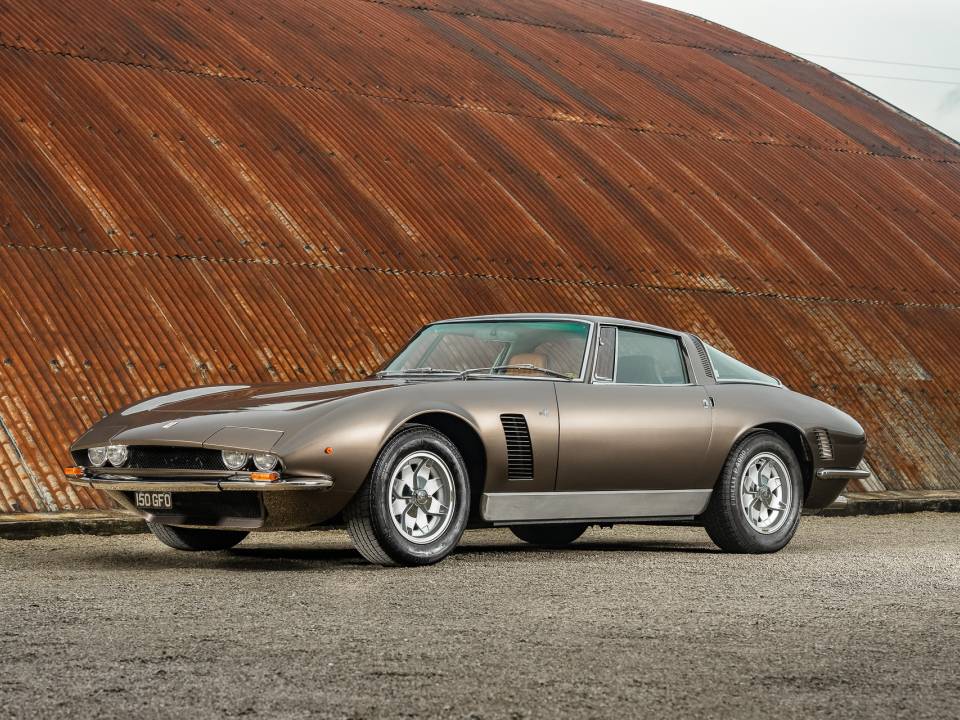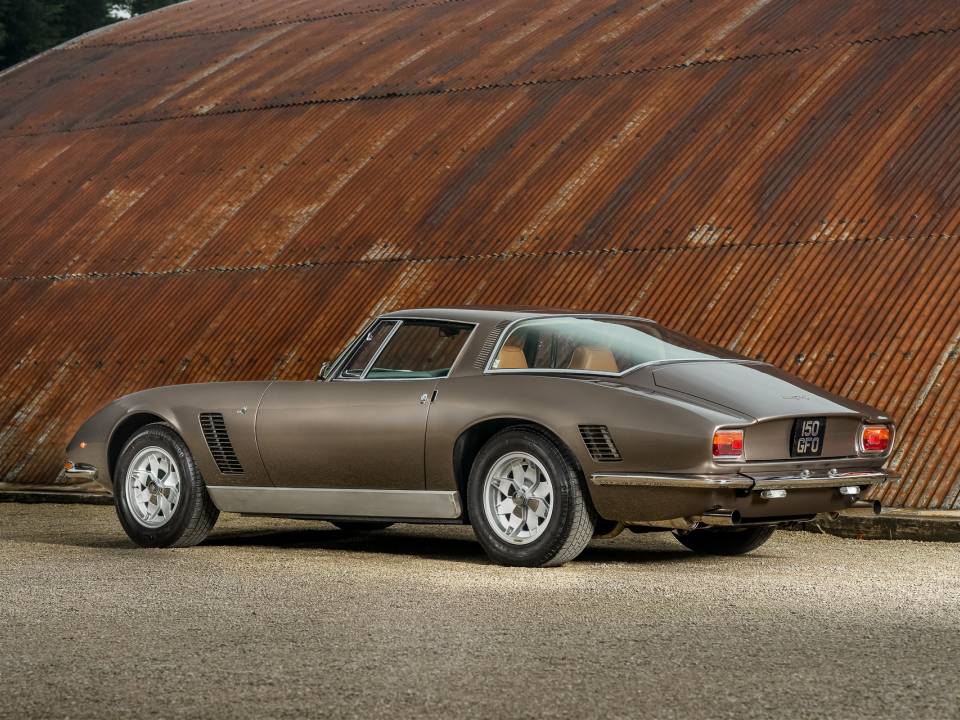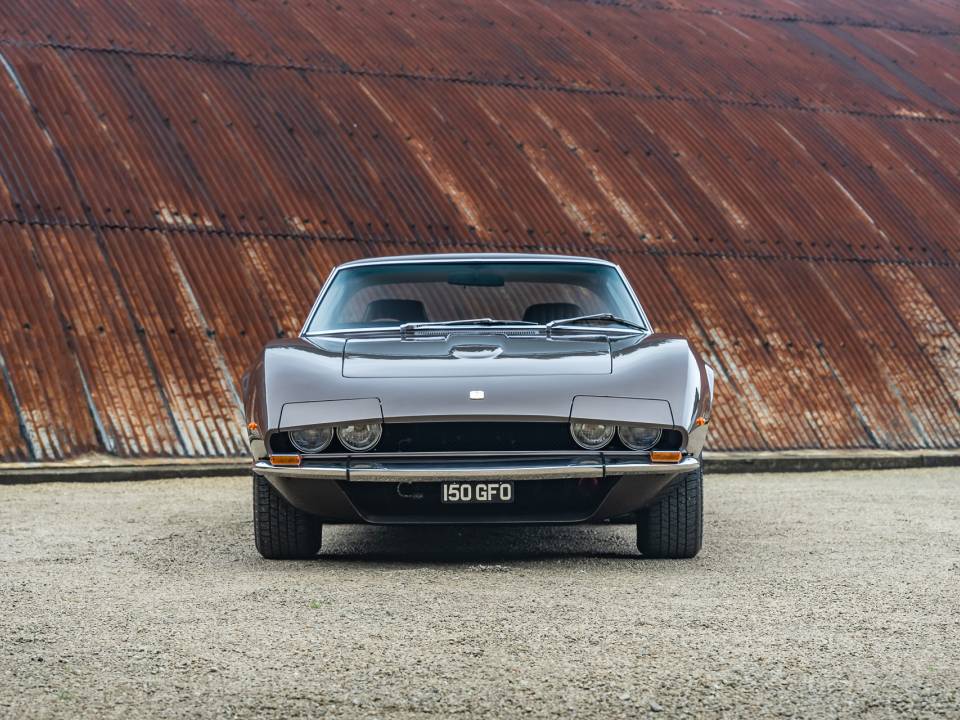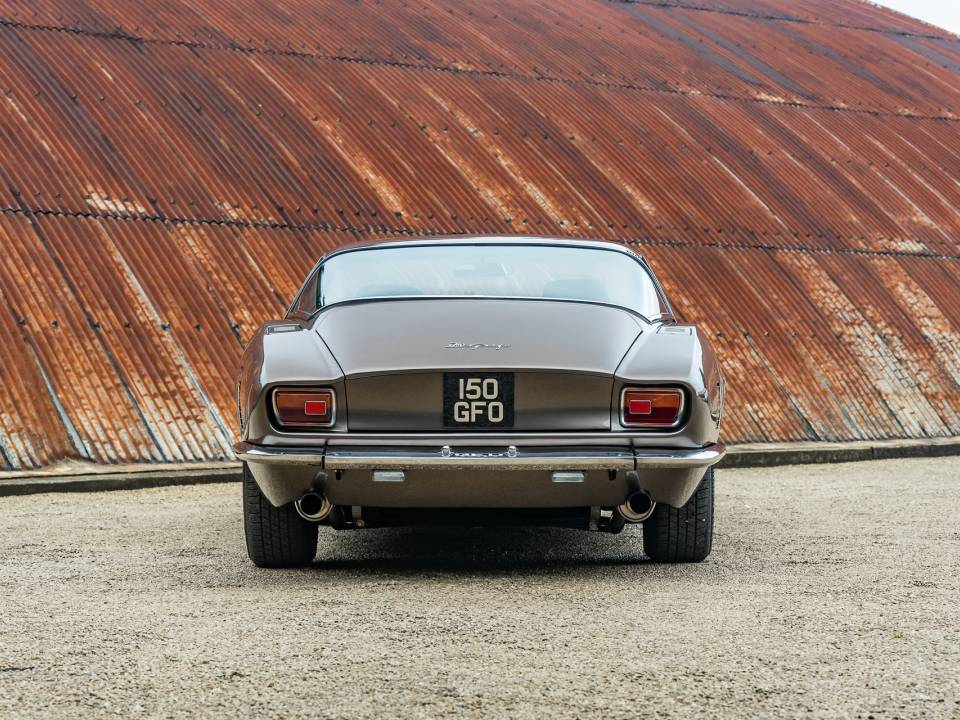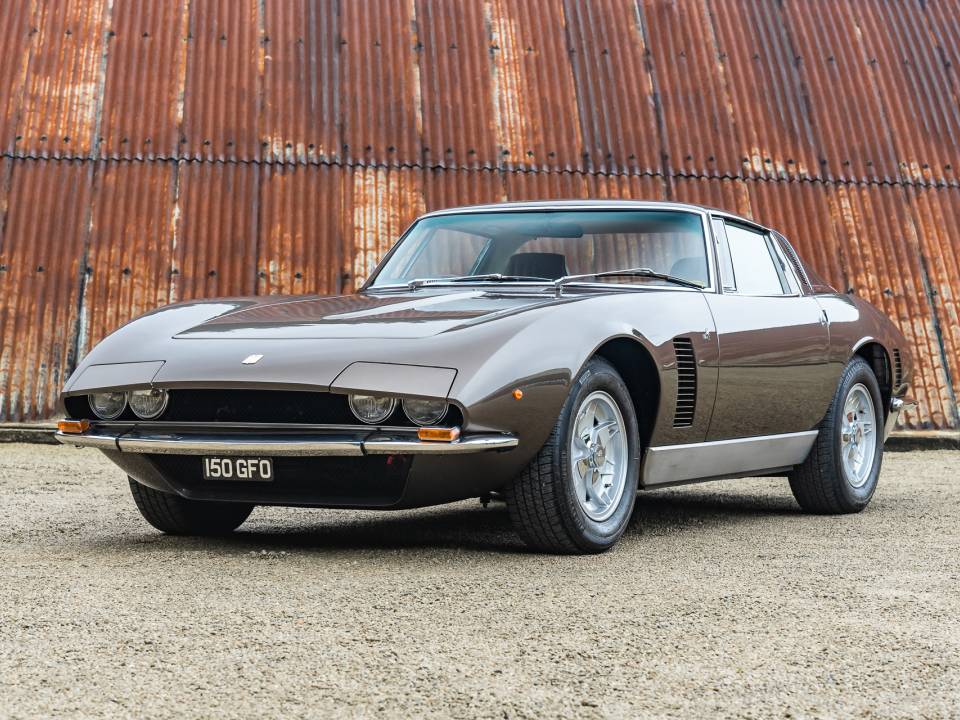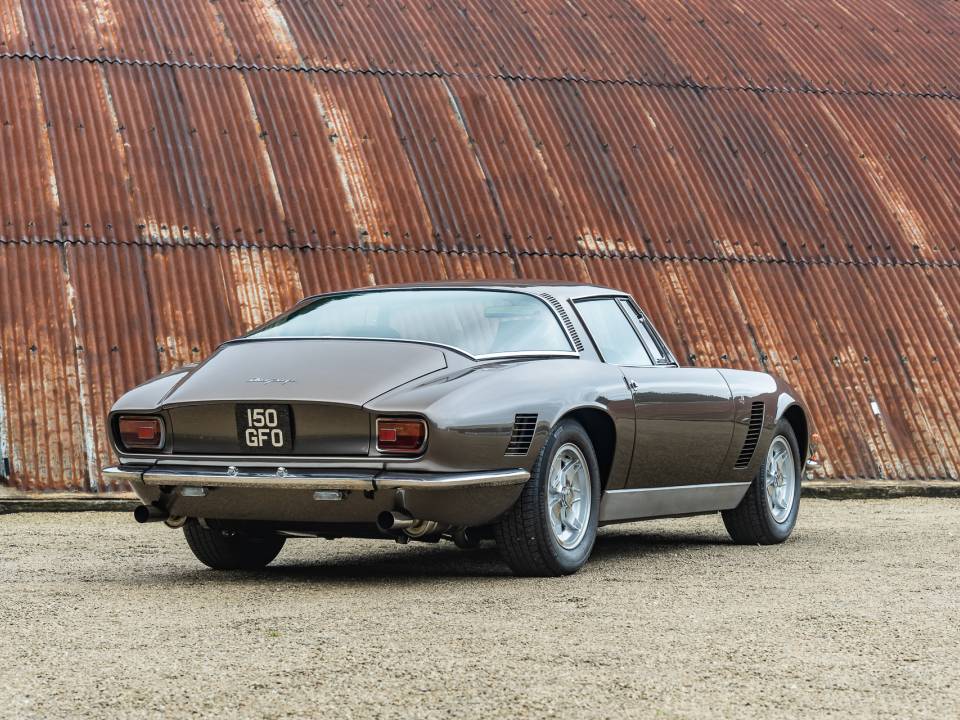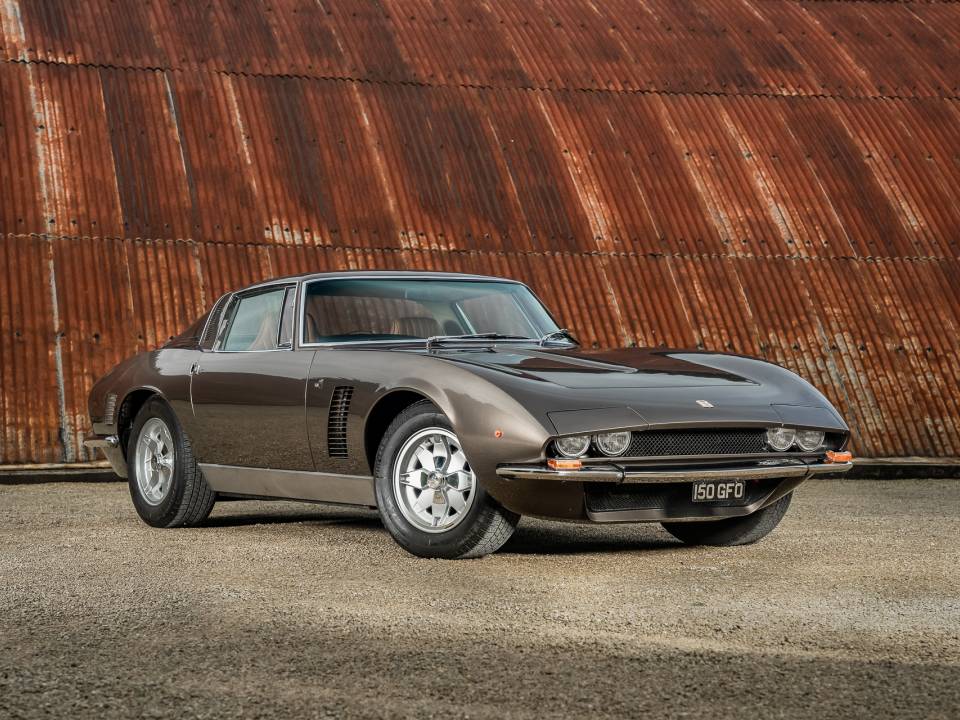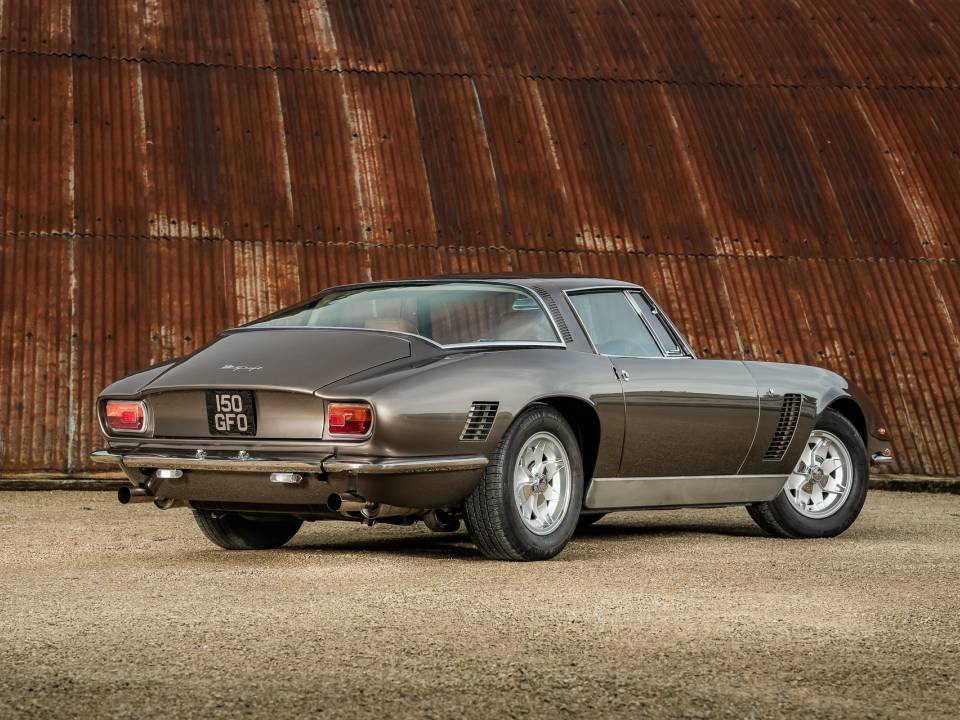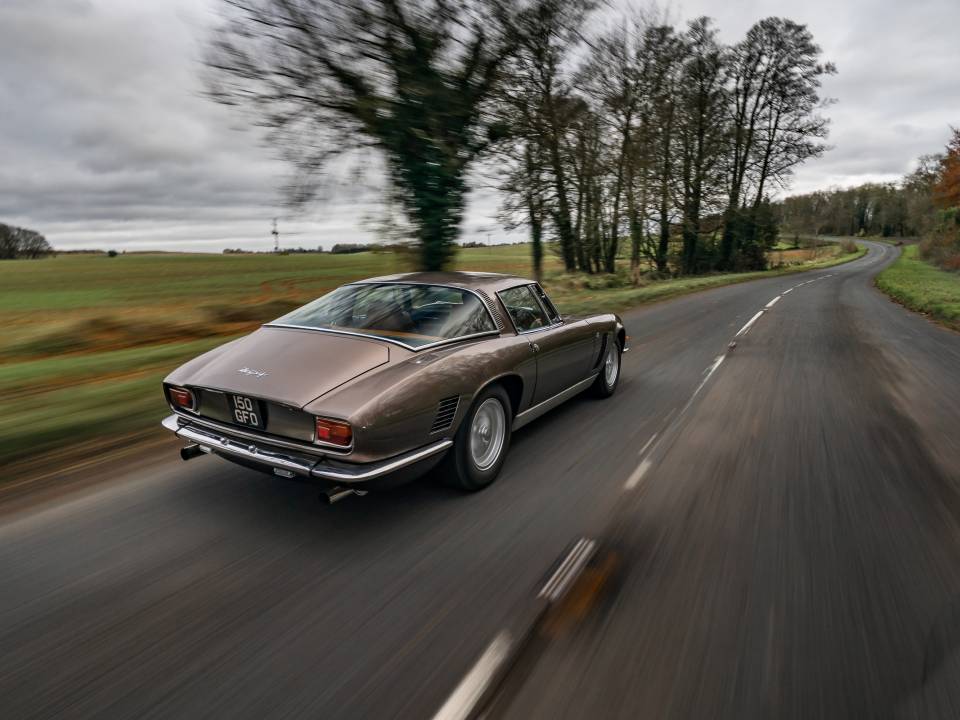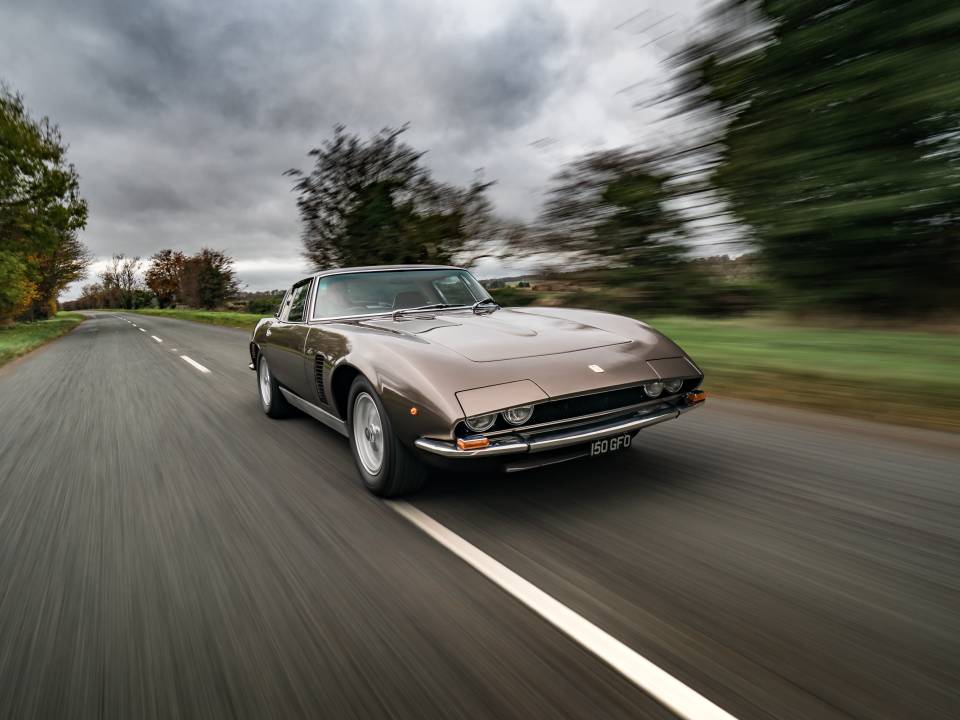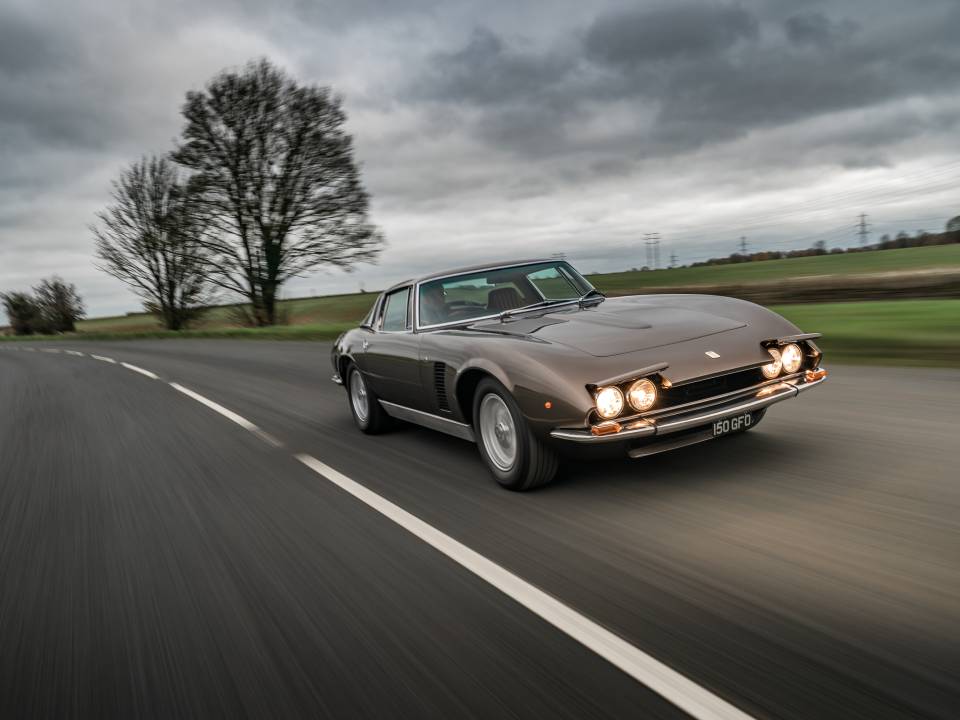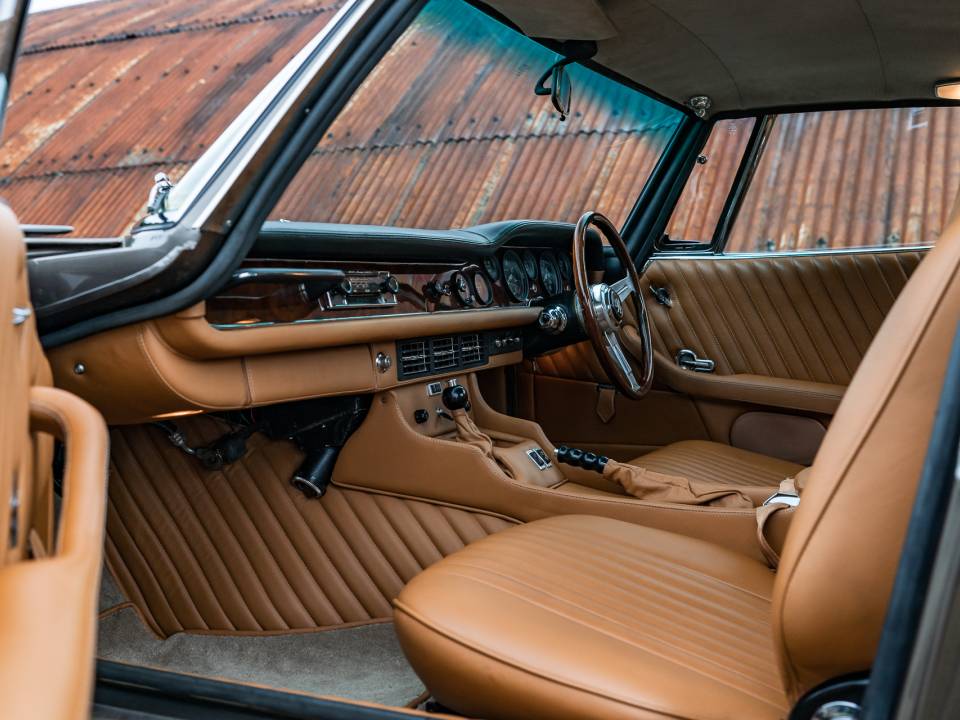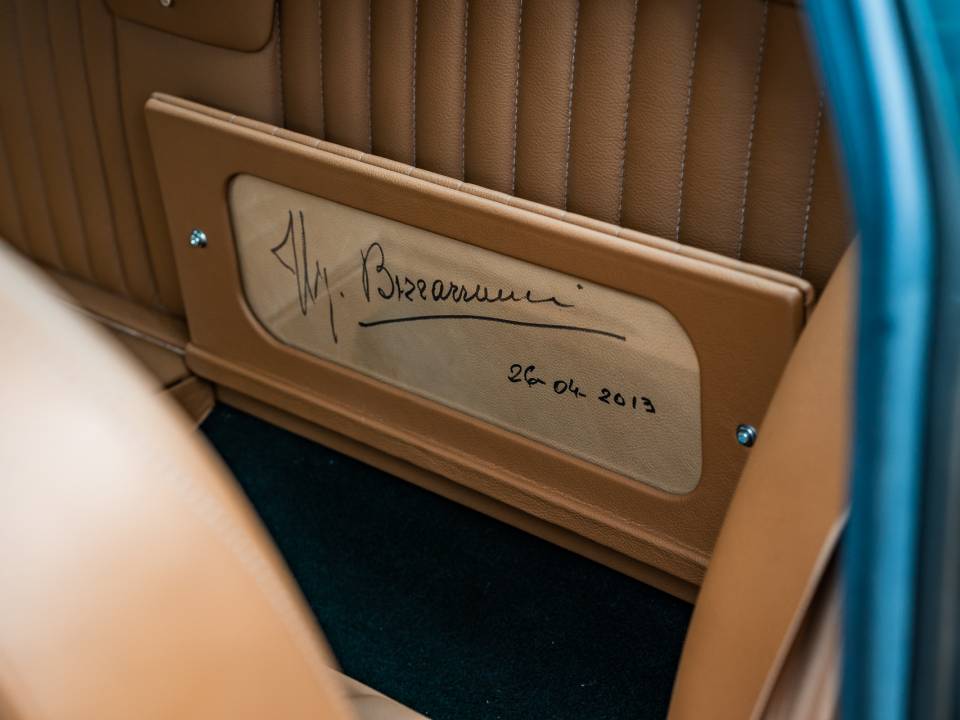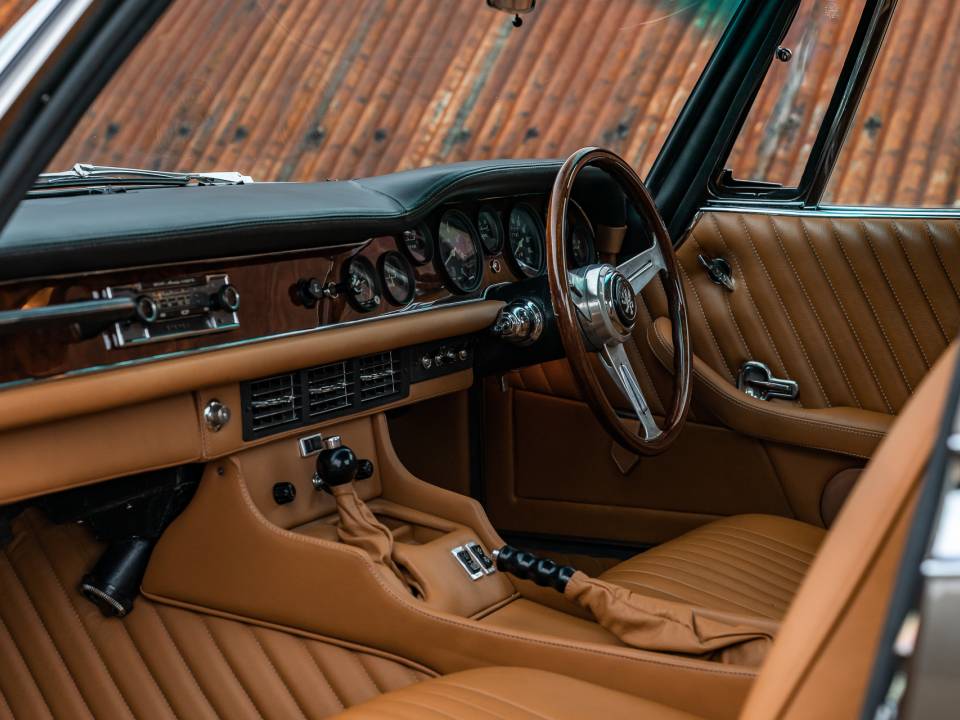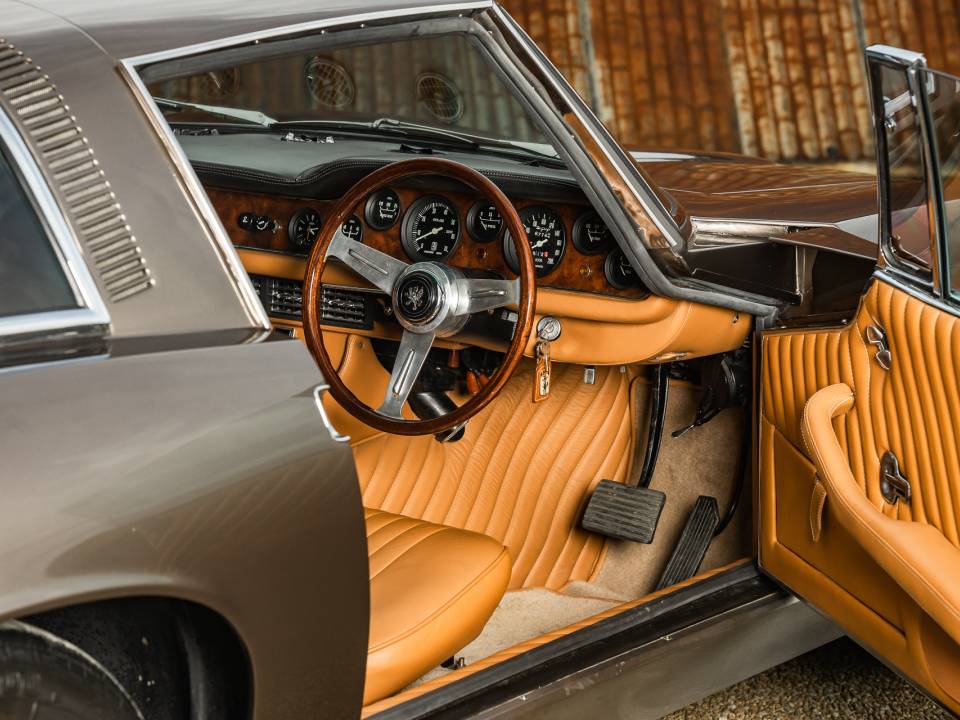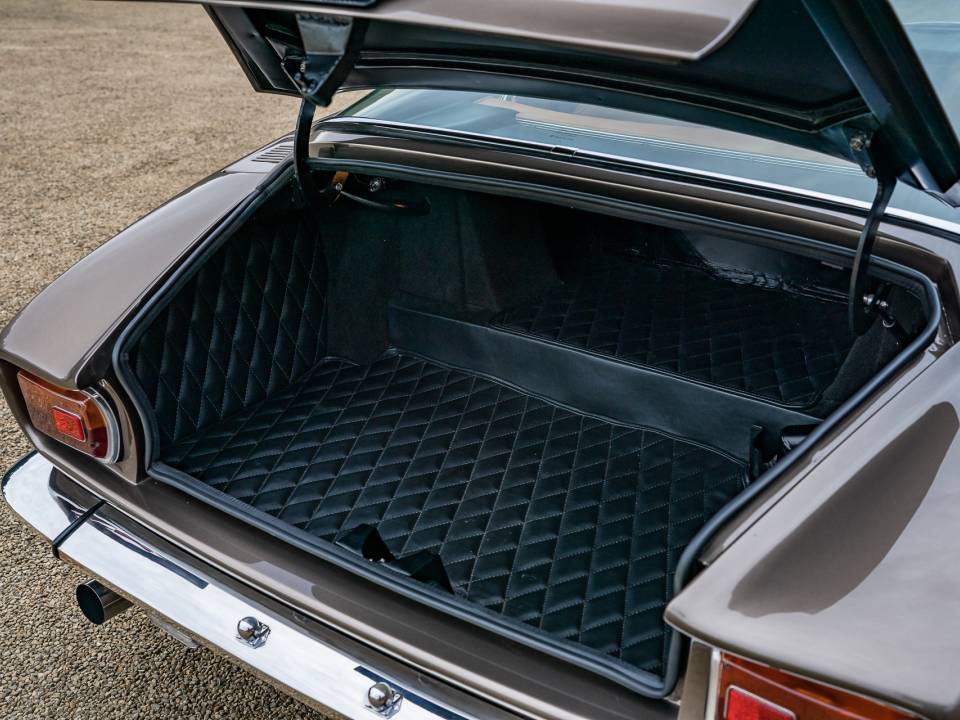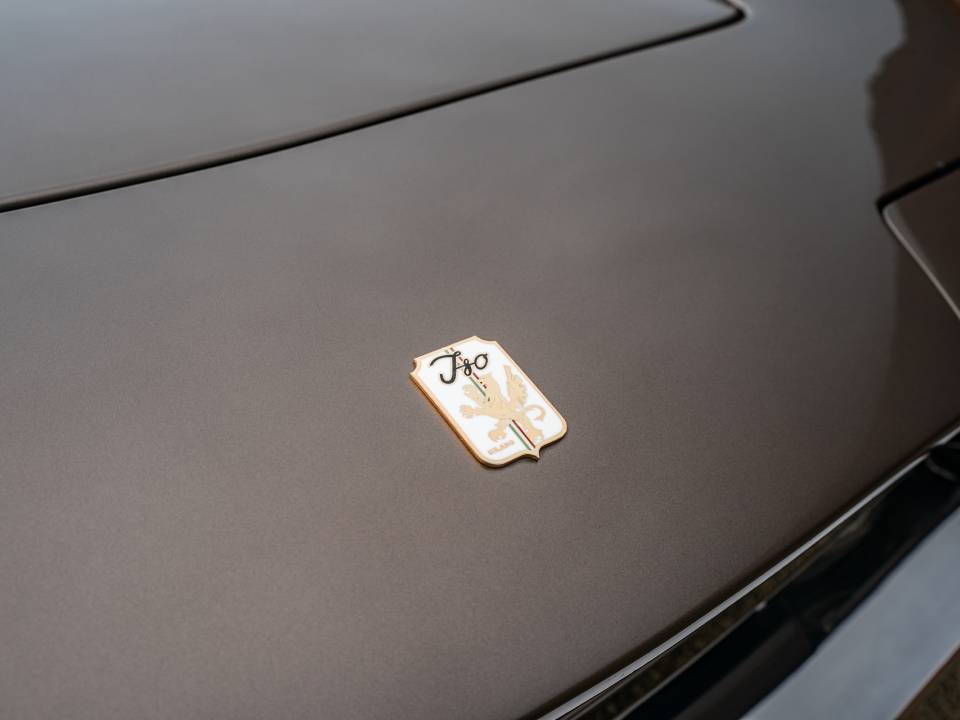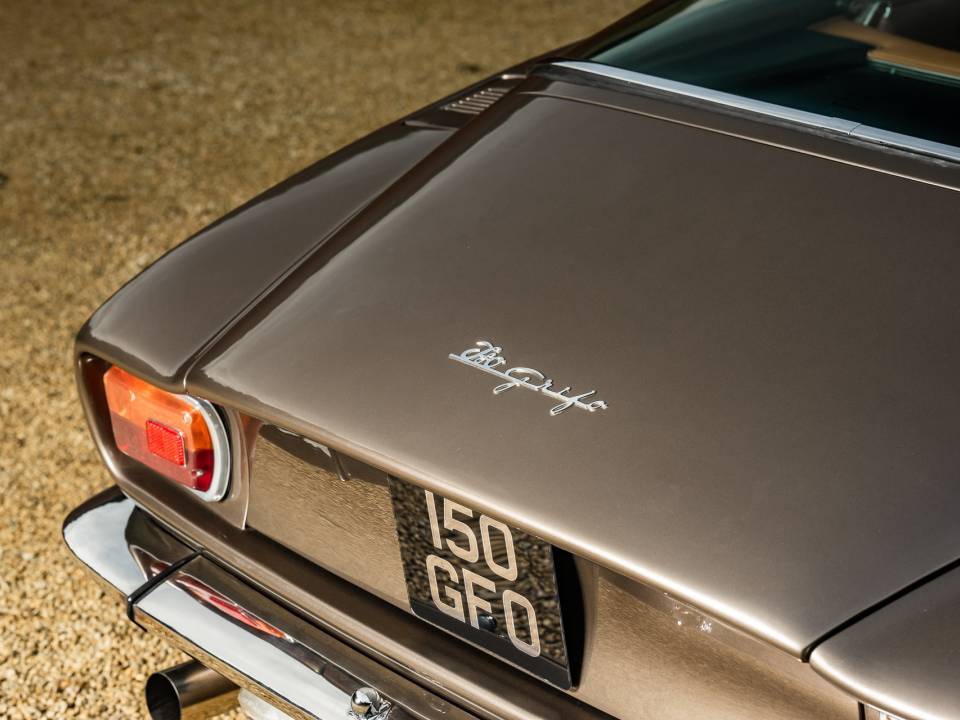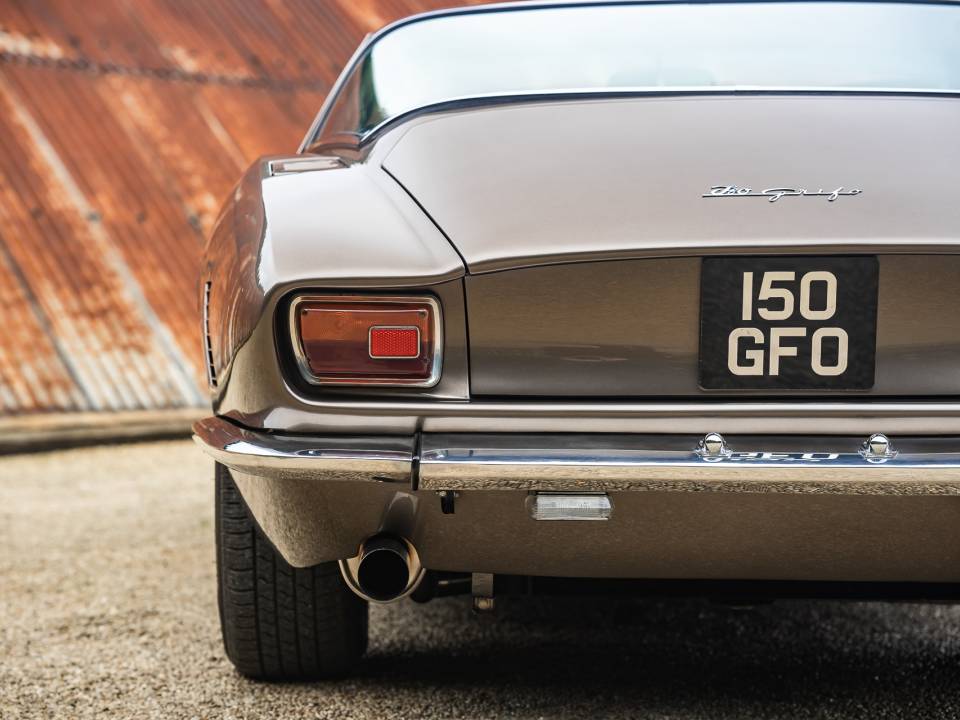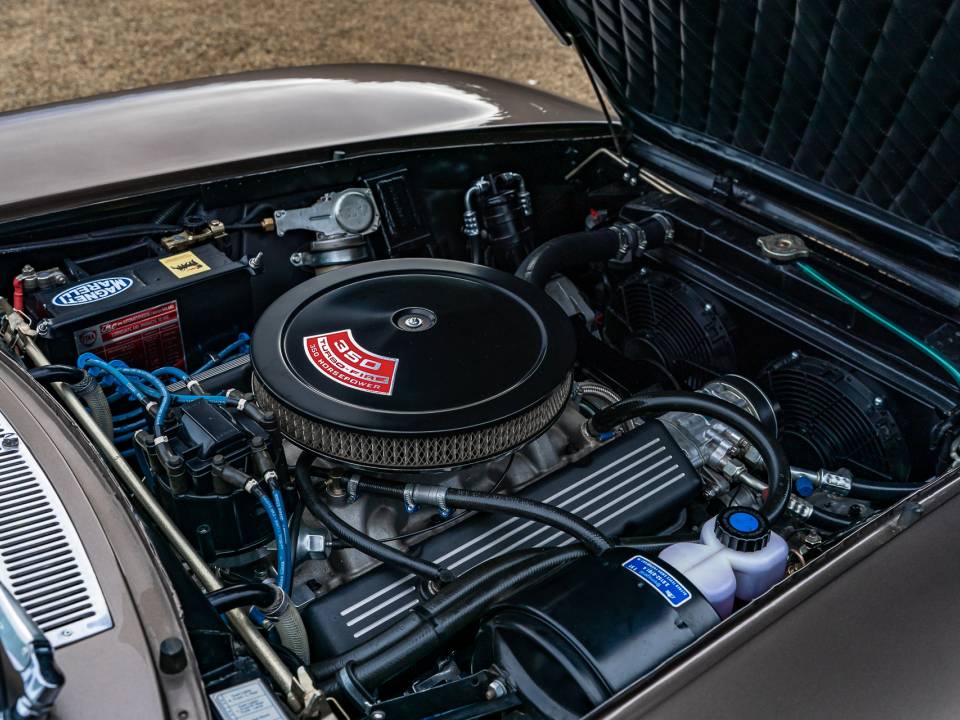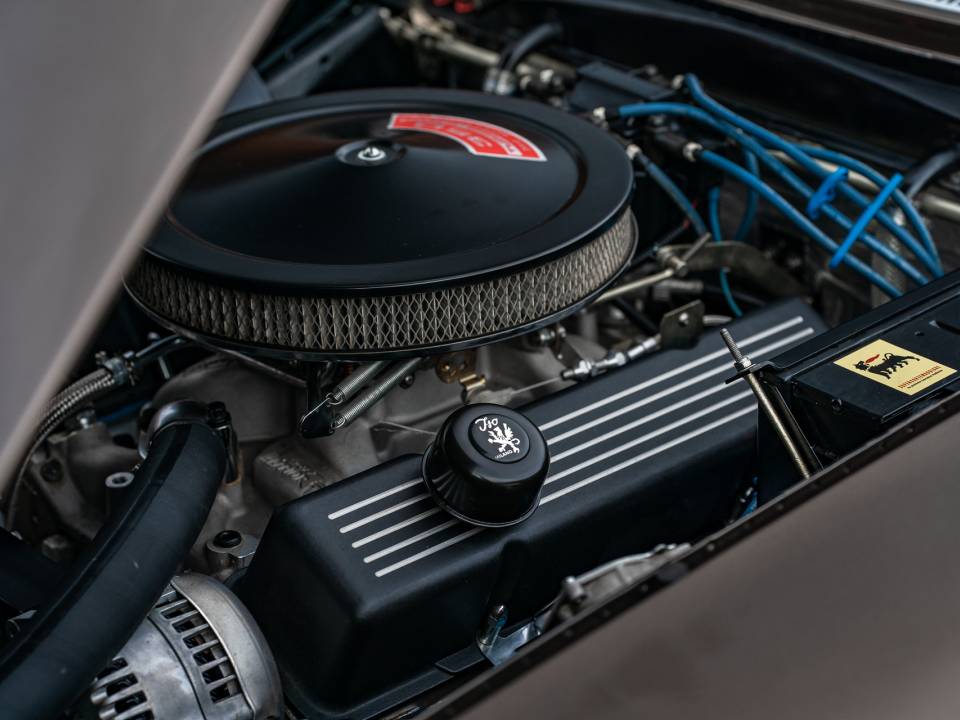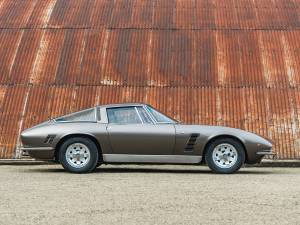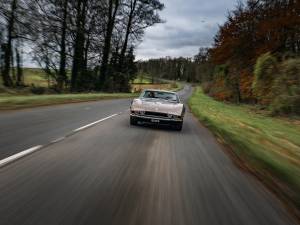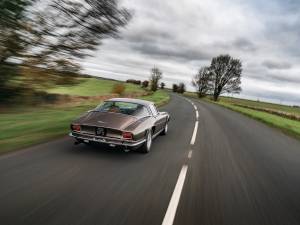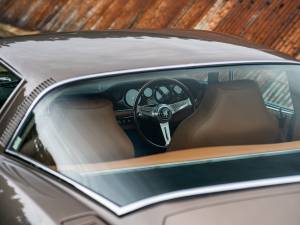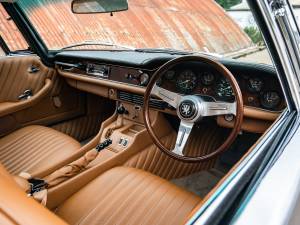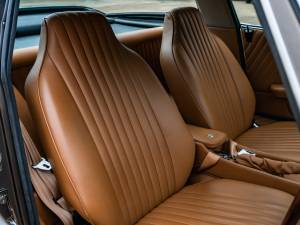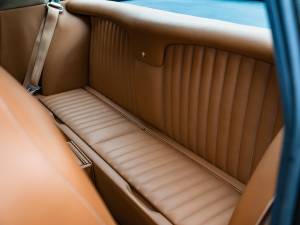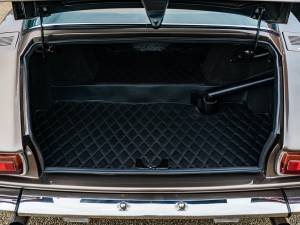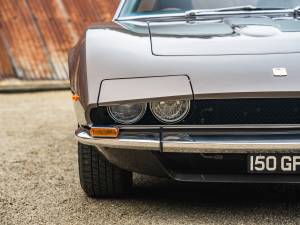1972 | ISO Grifo
Series II Automatic RHD
Series II Automatic RHD
Series II Automatic RHD
Alle Services zu diesem Fahrzeug
Beschreibung
1972 Iso Grifo Series 2
One of only five RHD Series II cars built
Fully restored to concours condition over 19 years
Class winner at 2019 Chantilly Arts et Elegance
Huge history file and discreetly signed by Piero Rivolta and Giotto Bizzarrini
To call the restoration of this 1972 Iso Grifo a labour of love would be an understatement. It was rebuilt with a passionate attention to detail and it’s no surprise that it subsequently won its class at one of the most prestigious European concours of all.
The last of only five right-hand-drive Series 2 Grifos that were fitted with the small-block 5.7-litre Chevrolet V8 engine, it came equipped with power-steering and air-conditioning. The first owner listed in the UK logbook is Robert Jull, who told the current owner that he found the Grifo too powerful for him, so he sold it to a London nightclub owner. It was later acquired by Rupert Beckwith-Smith and then DE Murray – owner of Rangers football club.
After passing through two more owners, the car was bought at auction by an enthusiast who had been hooked on Grifos since the age of 10, when he saw a Series 2 in The Observer’s Book of Automobiles. The car was in his ideal specification but he decided to remove the engine so that he could tidy up the engine bay. That small act turned into a 19-year full restoration…
After not being happy with an early respray in dark blue, he delved a little deeper into the bodywork before deciding to hand it over to a restoration specialist. The first step was to chemically dip the bare shell so that it could be properly assessed. Of the body panels, only the bonnet, roof and boot lid were retained – everything else was replaced.
Along the way, some clever improvements were made. The front inner wings can be unbolted to allow access to the bulkhead and headlight area, drain tubes run from the grilles in front of the rear window to the wheelarch to allow water to escape, and the front chassis rails were moved slightly outwards to enable the exhaust to pass inside them.
While Iso used to simply cut out a box section to fit the wider TH400 automatic transmission, on this car a new box section was fabricated in order to be safer and stronger than the factory method.
The work to the chassis and body took six and a half years and four times the original budget, and in the meantime the owner was sourcing parts from around the world.
Reassembling the car then took a further three and a half years. The installation of the engine-bay ancillaries was improved with a 170-amp alternator, modern air-conditioning, a new power-steering pump that did away with the separate reservoir on the wing, and a new high-flow water pump.
The engine, radiator, gearbox, differential, brakes and suspension were all rebuilt, Dynamat insulation was used throughout and a completely new wiring loom fitted. The magnesium wheels were stripped and X-rayed before being ‘chromated’ to seal them and then hand-finished.
Everywhere you look, there’s impressive attention to detail. A new, tidier fusebox was hidden inside the glovebox, but to retain the original look a stainless-steel replica fusebox was mounted in the correct place in the engine bay. The sound system has also been uprated with an amplifier under one seat and a subwoofer under the other.
Having originally been red, the Grifo was resprayed in a different shade of the same colour while Fred Moss owned it. It was then briefly blue during the restoration process, before the owner settled on the very attractive ‘Varedo Bronze’ – a colour that perfectly shows off the Grifo’s elegant, muscular lines.
The interior, meanwhile, was retrimmed in Camel Birch and features a special touch. In 2013, the owner went to Italy for an Iso event and asked marque owner Piero Rivolta and engineer Giotto Bizzarrini to sign two pieces of leather. These were then mounted on panels behind the seats, beneath plastic covers and away from damaging sunlight.
The restoration was finished in 2019, just in time for the Grifo to be shown at the prestigious Chantilly Arts et Elegance event near Paris. All the hard work paid off when it won its class, which was judged by Andrea Zagato – the son-in-law of Piero Rivolta.
The owner later drove the car across Europe to the old factory in Varedo, near Milan; it was apparently the first Iso to go into the factory since it had closed its doors in 1974. The Grifo was also briefly displayed in the foyer of the Italian National Automobile Museum in Turin during the Museum’s Iso commemorative exhibition.
Now being offered for sale for the first time in more than 20 years, this cherished Iso Grifo remains in immaculate concours-ready condition. There are two history files full of research, invoices and receipts, plus numerous photographs. Already a rare car, it boasts some well-considered personal touches that make it a unique example of this extremely attractive Italian-American grand tourer.
Model history
When it was introduced in 1965, the Iso Grifo featured input from some of the most famous names in motoring. The stylish bodywork was penned by Giorgetto Giugiaro at Bertone, while the engineering side of things was entrusted to Giotto Bizzarrini – the man who had done much of the work developing the 250 GTO while he was at Ferrari.
The basic recipe was to blend Italian styling and engineering with a small-block Chevrolet V8 engine. This robust powerplant was offered in two states of tune, the hottest of which produced 365bhp – enough to make the Grifo a rival to the refined GTs being produced by Ferrari and Maserati. That was an impressive boast for a company that had started out in the 1950s making motorcycle-engined microcars.
The Series 2 model followed in 1970 and featured subtly revised styling, the most obvious change being to the front end, where the headlights were hidden under neat covers. The most extreme Grifo variants gained Chevrolet’s 7-litre or 7.4-litre engines, which boosted power to well over 400bhp. In 1972, late in the model’s production life, the IR-8 model was introduced with Ford V8 engines.
When Car and Driver tested an early Grifo, it recorded a 0-60mph time of seven seconds. ‘As a comfortable Grand Touring machine,’ it stated, ‘the Iso is an unqualified success.’ British magazine Autocar reached a maximum speed of 161mph, making the Grifo the fastest car it had tested to that point.
Only 413 Grifos of all types were built before Iso car production came to an end in December 1974, and of those only 31 were exported new to the UK.
Fahrzeugdetails
Fahrzeugdaten
- Marke
- ISO
- Modell
- Grifo
- Erstzulassung
- Nicht angegeben
- Baujahr
- 1972
- Tachostand (abgelesen)
- 67’800 mls
- Fahrgestellnummer
- Nicht angegeben
- Motornummer
- Nicht angegeben
- Getriebenummer
- Nicht angegeben
- Matching numbers
- Nein
- Anzahl Vorbesitzer
- Nicht angegeben
Technische Details
- Karosserieform
- Coupé
- Leistung (kW/PS)
- 261/355
- Hubraum (ccm)
- 5354
- Zylinder
- 8
- Anzahl Türen
- Nicht angegeben
- Lenkung
- Rechts
- Getriebe
- Automatik
- Gänge
- Nicht angegeben
- Antrieb
- Heck
- Bremse Front
- Nicht angegeben
- Bremse Heck
- Nicht angegeben
- Kraftstoff
- Benzin
Individuelle Konfiguration
- Außenfarbe
- Braun
- Herstellerfarbbezeichnung
- Varedo Bronze
- Servolenkung
- Ja
- Elektrische Fensterheber
- Ja
- Innenfarbe
- Braun
- Innenmaterial
- Leder
- Klimaanlage
- Ja
Zustand & Zulassung
- Zustandskategorie
- Restauriert
- Gutachten vorhanden
- Zustand
- Zustandsbericht beauftragen
- Zugelassen
- Fahrbereit
Services für ISO Grifo
- In Kooperation mit:

Anfahrt

The Classic Motor Hub
Sales Team
Appointment Only
GL7 5NX Bibury
🇬🇧 Vereinigtes Königreich
